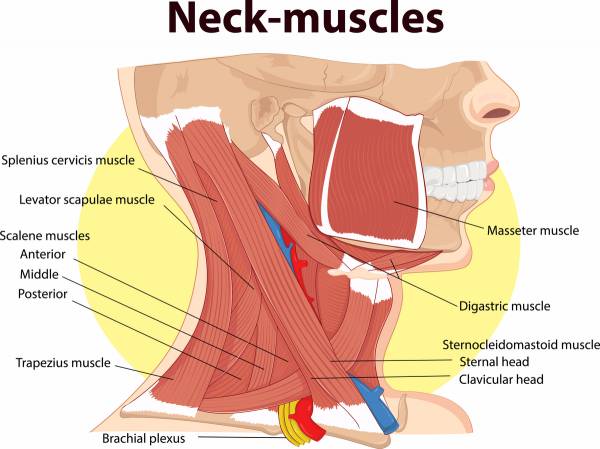It’s time to revisit the virtues of possessing strong neck musculature. In short, the neck and cervical spine serve as the conduit from the brain to the rest of the body. Not much muscle volume protects that all-important corridor.
It’s time to revisit the virtues of possessing strong neck musculature. In short, the neck and cervical spine serve as the conduit from the brain to the rest of the body. Not much muscle volume protects that all-important corridor.
It is therefore prudent to fortify that area to facilitate better function from the brain to the rest of the central nervous system. You don’t need to be a football player, wrestler, MMA athlete, or soccer player to focus on the neck. Possessing a strong neck has an upside for anyone.
The Advantages of a Stronger Neck
Admit it. You have given zero thought toward strengthening the neck because of these points:
- It supposedly does not come into play during a CrossFit competition.
- It is not judged in a bodybuilding competition.
- There are no markers out there relative to neck strength (i.e., how much can you neck flex?).
- It’s your neck. How many of you even give one iota of thought to that body part?
If you’ve referenced the previous hyperlinks regarding the virtues of a stronger neck, you now know the neck is often overlooked and disregarded. Here’s an excerpt for those of you who didn’t click through:
- Nerve impulses running from the brain through the spinal cord can be affected by damaged, weak, or fatigued neck muscles. This can diminish both static and dynamic balance as well as basic locomotive actions. A stronger neck can thus improve balance and locomotion.
- Regarding head training, having strong jaw muscles can lower the risk of injury. The ability to maximally bite down or clench on a mouthpiece prior to a collision is desired.
- Similarly, knowing a head or neck impact force is forthcoming can better prepare the athlete for what lies ahead. A study found that when athletes knew it was coming, they were then better able to contract neck and head musculature prior to impact and reduce the severity of concussions.
- Believe it or not, the strength of the neck can also impact the respiratory system and the quality of breathing. The anterior, medial, and posterior scalene muscles, along with the platysma and sternocleidomastoid muscles, contract and assist in respiration, especially during demanding exercise.
If you finally see the upside of a stronger neck, it’s time to revisit it and look at addressing it.

Neck muscles
Five Short and Simple Neck Strengthening Exercises
Here are five simple and time-efficient neck-strengthening exercises you can add to your existing training program to fortify that cylinder that connects your brain to the rest of the body. If you don’t have access to this equipment (the training equipment, not your brain), a partner can apply manual resistance to the forthcoming movements.
- Machine flexion – chin to the chest
- Extension – chin away from the chest
- Lateral flexion – side to side, ear to the shoulder
- Rotation – look to the right and left
- Protraction and retraction
4 Way Neck Machine: Neck flexion, extension, and lateral flexion
Exercise band: Neck rotation
Partner drill: Neck protraction and retraction
Summary
Most people neglect neck strength. Possessing a stronger neck has an upside, so pay attention to it. It doesn’t take that much extra time. Add these exercises to your program and reap the benefits of doing so.






